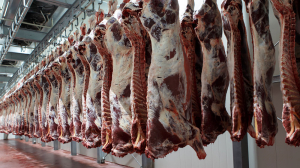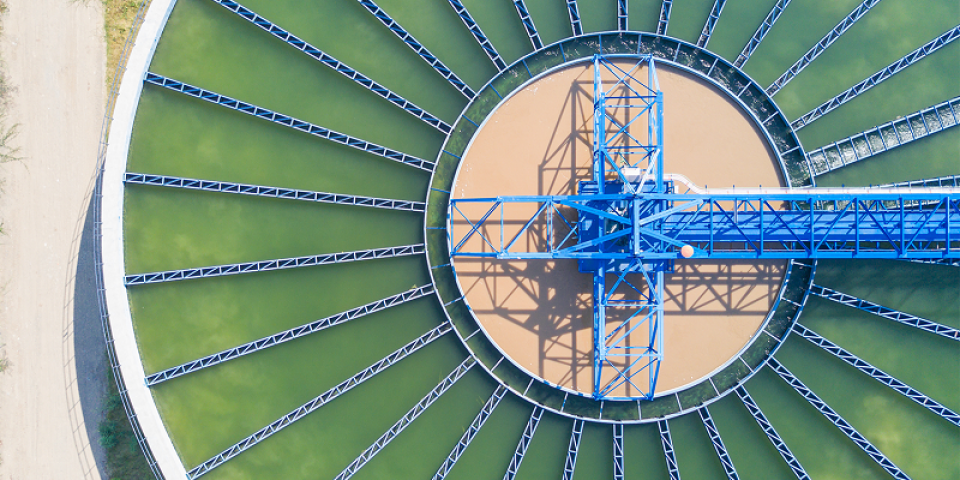


The article appeared in the January/February 2020 issue of EURObiz.
Image Credit: EUCCC EURObiz
China’s eastern and southern regions endure flood seasons from May to September annually, while the north can go for months without rain. Rapid urbanisation and impervious building materials have exacerbated the impacts of these natural cycles in recent times. Liam Z. Jia, business advisor with the EU SME Centre, outlines how China is working with the concept of ‘sponge cities’—urban areas designed to absorb, clean and re-use rainwater—and the business opportunities therein for European companies.
The overall policy framework
As early as November 2012, an overall policy framework for an ‘ecological civilisation’ was declared at the highest levels of the Chinese Government during the 18th National Congress of the Communist Party of China. By October 2015, the policy had been officially included in the 13th Five-year Plan and addressed during several speeches by President Xi Jinping before being eventually included in the constitution during the 13th National People’s Congress.
Since the declaration of the policy framework, the Party Central Committee has vigorously promoted the construction of an ecological civilisation, and significant progress has been made in ecological governance systems. In order to curb environmental pollution, a series of laws and policies have been promulgated, such as the new Environmental Protection Law,[1] the Air Pollution Prevention Action Plan,[2] the Water Pollution Prevention Action Plan,[3] and the Soil Pollution Prevention Action Plan.[4]
The ecological civilisation policy framework is driving a transformation of the Chinese economy into one that’s more environmentally aware and sustainable. To break the policy down into more simple terms and concrete targets, it means understanding the needs of a diverse and healthy ecosystem that will support human civilisation, and designing infrastructure that can be sustainably operated so people can live in accordance with the goals of an ecological civilisation. These targets are challenging, while at the same time promote the development or acquisition of innovative technologies, systems and methods.
The policy framework also requires new urban developments to incorporate resource efficiency at the design phase, buildings to be energy- and water-efficient, and city landscaping to also provide functional ecosystem services. The policy has now also been codified in the Ministry of Housing and Urban-Rural Development’s (MOHURD’s) Sponge Cities Guidelines and the Ministry of Water Resources’ (MWR’s) Water Ecological City Construction Evaluation Guidelines.[5]
The water sector in China and the ‘sponge city’ concept
The policy framework aimed to improve the management of the water cycle in terms of resources, chemical quality, ecological quality and interaction with infrastructure. China has a decentralised administrative system for water services; it is devolved to provincial, municipal and county-level government authorities. They are responsible, on different levels, for a wide range of aspects, including water resources management, water treatment and supply, sewerage and collection, wastewater treatment, sludge treatment and environmental quality. They deliver these services based on policy and advice from the central government.
At the municipal level, the ‘sponge cities’ concept has been introduced and become the Chinese equivalent of Sustainable Urban Design (SUD) in Europe or Low Impact Design in the US. However, the concept is wider than just drainage management and green infrastructure; ‘sponge cities’ also take into account water capture, storage (including groundwater recharge) and reuse; rehabilitation of degraded urban water courses; wastewater recycling and reuse; and the general improvement in liveability of cities.
Image 1: How a sponge city works
Initially, the sponge cities programme was rolled out in late 2015 with the announcement of 16 pilot cities that would get substantial central government funding support (about Chinese yuan (CNY) 500 million per city per year). In 2016, a further 14 cities were added. While there was no obligation for the first 16 cities to employ public-private partnership (PPP) models, some element of private finance is required in all 14 new projects. China’s Ministry of Finance reports that 12 sponge city PPP contracts, worth a total of CNY 46 billion, have either been recently awarded or are under preparation.
The identification of the 30 pilot ‘sponge cities’ has opened many opportunities for European planners, designers and engineers to develop innovative integrated designs for decentralised water systems, recycling sustainable drainage, river and lake rehabilitation and in-situ treatment with ecological landscaping. European firms experienced in developing solutions for energy, water, transport and solid waste management and recycling—as well as seeing past the limitations of entrenched procedures to implement a circular economy—will have an advantage.
Image 2: Pilot sponge cities on Mainland China
Bundling wastewater treatment plants (WWTPs) into sponge city PPPs is a new way of enhancing the environmental and financial benefits. In the past two years, the scope of PPPs in the water sector has expanded exponentially, with many projects now including environmental services without a revenue stream attached, such as river remediation, landscaping and drainage services. This is even happening outside official sponge city pilot areas.
European small and medium-sized enterprises (SMEs) could provide green infrastructure designs or technology, either directly to the municipal governments or—more likely—to the companies bidding for project contracts. These may be national-level companies specialising in water PPP projects—such as Tsinghua Holdings Ltd, Beijing Enterprises Water Group (BEWG), China Everbright and Beijing Capital—or local companies with close connections to the municipal governments. These companies will have to partner with construction contractors for project delivery, and often also design consultants. This differs from the normal WWTP or water supply PPP contract competitions, which are normally bid on by a single company. This trend reflects the more complex nature of sponge city projects, which require urban construction and urban planning, as well as water infrastructure experience.
Examples of recent tenders are the Sanya Sponge City PPP project on Hainan Island, at CNY 4 billion on 6th December 2016, by a consortium comprised of Jiangsu Zhingnan Construction, Beijing Urban Construction and China Wuzhou Engineering.[6] A project open for request for proposal (RFP) as of April 2017 is the United States dollar (USD) 238 million Shenzhen Guangming New District Sponge City.[7]
Challenges facing the sector, market access barriers and opportunities for EU SMEs
Many of the new laws and regulations are driving investment in new technology and innovative solutions that can deliver better environmental and living conditions for the population. All new developments must meet water resource allocation limits, pollution load allocations and water reuse/recycle targets, and comply with sponge cities standards. With these objectives in mind, European SMEs can seek to engage with Chinese partners to supply equipment, infrastructures and services.
After all, many cities in China are still facing severe challenges from water scarcity, pollution, flooding and inadequate infrastructure. Water security is critical to sustainable growth in China and the government is greatly increasing investment in the sector. Water scarcity and pollution issues represent both considerable risks to economic growth and opportunities for growth.
China wants to access the best international practices that have demonstratedly turned risk into potential for growth, but there are many barriers to overcome: localisation, knowledge, language, culture, IPR and finance. Products need to be adapted to local requirements, and companies will need to develop their relationships with partners and clients, while complying with local business processes. Winning contracts and orders will also require an understanding of local procurement processes. To be successful, EU SMEs will have to find the niche for their expertise and premium technology, and clients with the financial resources to procure their services. If they get it right, the opportunities will eventually outweigh the challenges.
[1] The Environmental Protection Law of the People’s Republic of China comes into force on 1st January 2015, State Council, 25th April 2014, viewed 14th January 2020,
[2] The State Council issues ten measures of the ‘Air Pollution Control Action Plan’, State Council, 13th September 2013, viewed 14th January 2020,
[3] State Council issues ‘Water Pollution Prevention Action Plan’, State Council, 16th April 2015, viewed
[4] State Council issues ‘Soil Pollution Control Action Plan’, State Council, 31st May 2016, viewed 14th January 2020,
[5] Water Ecological City Construction Evaluation Guidelines SL / Z 738-2016, MWR.
[6] Global Water Intelligence, subscription service
[7] Global Water Intelligence, subscription service
About the Author
Liam Z. Jia is a business advisor at the EU SME Centre, a European Union initiative that provides a comprehensive range of hands-on support services to European small and medium-sized enterprises (SMEs), getting them ready to do business in China. Liam’s areas of expertise include: the Water Sector in China, Food & Beverage Exporting and Distribution in China, E-commerce and Digital Marketing in China. Liam also focuses on China’s outgoing strategies and overseas investment vehicles. He is an author/co-author of several EU SME Centre publications and a regular speaker on trade-related topics in China for EU SMEs.
About the EU SME Centre
The EU SME Centre in Beijing provides a range of support services to European SMEs, getting them ready to do business in China. Centre experts provide advice and support in four areas – business development, law, standards and conformity and human resources. The Centre converts knowledge and experience into practical business tools and services accessible online. From first-line advice to in-depth technical solutions, we offer services through Knowledge Centre, Advice Centre, Training Centre, SME Advocacy Platform and Hot-Desks. The centre is funded by the European Union and implemented by a consortium of six partners – the China-Britain Business Council, the Benelux Chamber of Commerce, the China-Italy Chamber of Commerce, the French Chamber of Commerce in China, the EUROCHAMBRES, and the European Union Chamber of Commerce in China.
To learn more about the Centre, visit www.eusmecentre.org.cn
About EUROBiz
EURObiz contains articles and features that address the important issues affecting European businesses in China.
Download the January/February 2020 issue of EURObiz here. Download the article here.